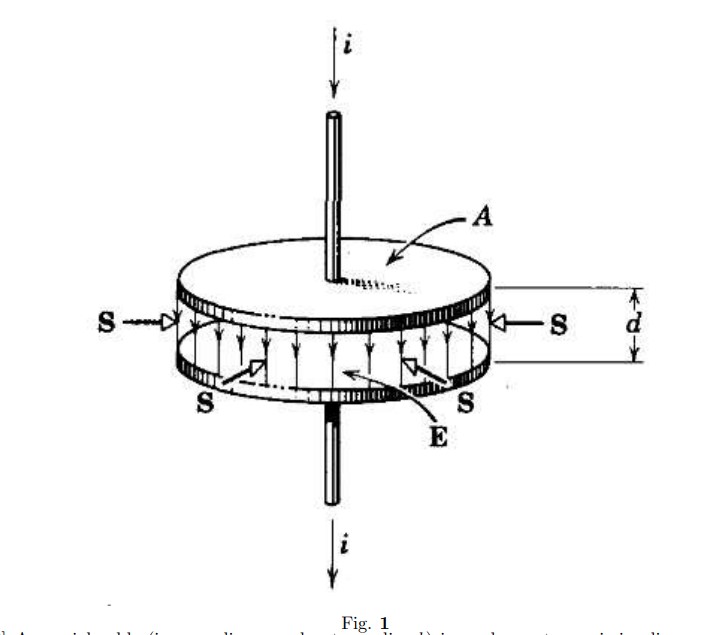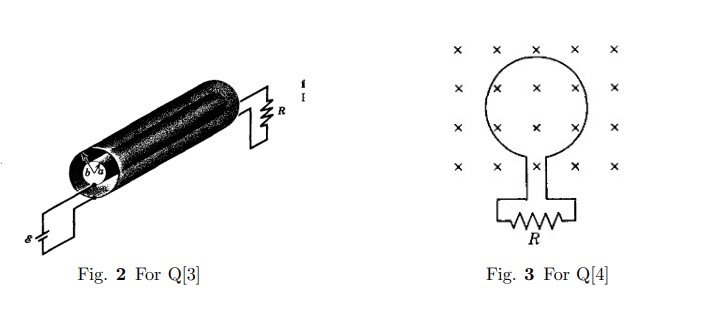Electrodynamics Oct 17, 2018
Tutorial-V (VI)
- A cylindrical resistor of length \(\ell\), radius \(a\) and resistivity $\varrho$ carrying a current \(i\).
- Show that the Poynting vector $\vec{S}$ at the surface of the resistor is everywhere directed to the normal to the surface, as shown,
- Show the rate $\rho$ at which energy flows into the resistor through its cylindrical surface, calculated by integrating the Poynting vector over this surface, is equal to the rate at which Joule heat is produced, i.e. \begin{equation*} \int\vec{S}\cdot\vec{dA}=i^2R \end{equation*}
- Figure 1 shows a parallel-plate capacitor being charged,
- Show that the Poynting vector \(S\) points everywhere radially into the cylindrical volume.
- Show that the rate \(P\) at which energy flows into this volume, calculated by integrating the Poynting vector over the cylindrical boundary of this volume, is equal to the rate at which the stored electrostatic energy increases; that is, that \[\int \vec{S}\cdot\vec{dA} = A d \frac{1}{2}\frac{d}{dt}(\epsilon \vec{E}^2)\],where \(Ad\) is the volume of the capacitor and \(\frac{1}{2} \epsilon_0\vec{E}^2\) is the energy density for all points within that volume. This analysis shows that, according to the Poynting vector point of view, the energy stored in a capacitor does not enter it through the wires but through the space around the wires and the plates. \{Hint: To find \(S\) we must first find \(B\), which is the magnetic field setup by the displacement current during the charging process; Ignore fringing of the lines of \(E\).)\}

- A coaxial cable (inner radius \(a\) and outer radius \(b\)) is used as a transmission line between a battery $\epsilon$ and a resistor \(R\),
- [(a)] Calculate $\vec{E}, \vec{B}$ for $a < r < b$
- [(b)] Calculate Poynting vector S for $a< r < b.$
- [(c)] By suitably integrating the Poynting vector, Show that the total power flowing across the annular cross section $a<r<b$ is="" $\epsilon^{2}="" r$.="" this="" reasonable="" ?="" <="" li="">
- [(d)] Show that the direction of $\vec{S}$ is always away from the battery to resistor, no matter which way is the battery connected.

Exclude node summary :
n
Exclude node links:
0
4727:Diamond Point
0






 ||Message]
||Message]
